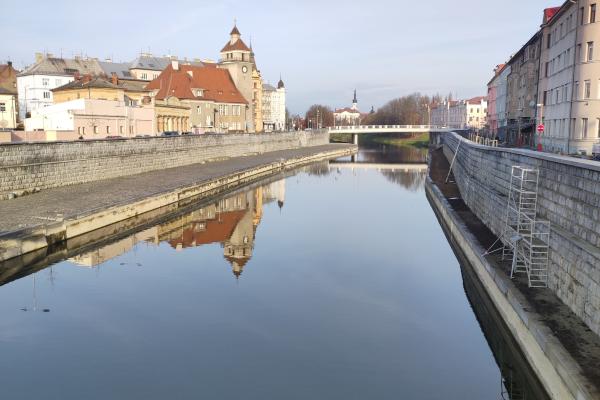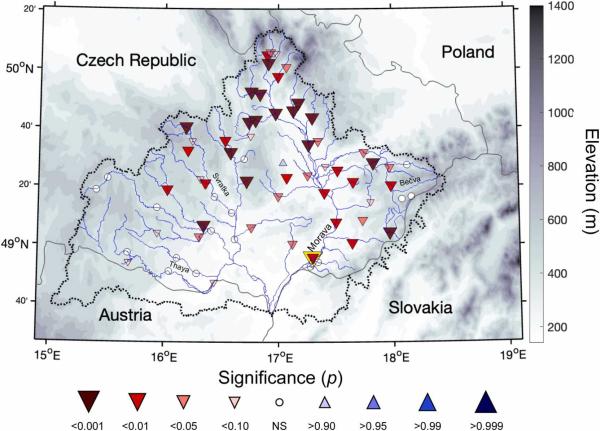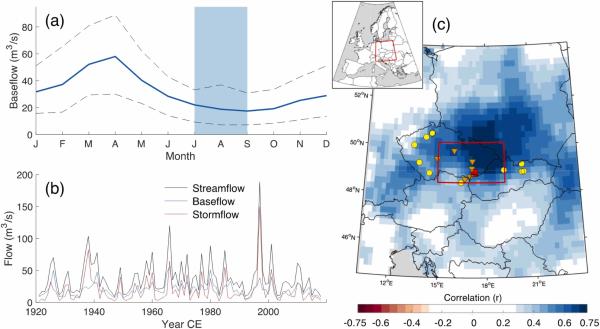Escalating Fluctuations in Warm-Season River Flow: A Reconstruction Study of the Morava River, Czech Republic

Climate change is increasingly contributing to the prevalence of extreme weather phenomena such as severe droughts and floods across Europe. Researchers have expressed concern regarding this trend, mainly because the existing data sets need to extend farther into the past to provide a comprehensive understanding of the situation. Consequently, this limitation hampers our ability to predict future weather patterns and their implications until now accurately.
A recent study on the Morava River in the Czech Republic, a major tributary of the Danube River, used tree rings to look at river conditions as far back as 1745. The results were surprising. The study, titled “Increasing volatility of reconstructed Morava River warm-season flow, Czech Republic”, found that the river's water levels have fluctuated much more in recent decades than in the past. This could mean that both extreme droughts and floods are more likely to happen in the future.

Significance of linear trend (Mann-Kendall test) in JAS baseflow for 70 gauges in the Morava River basin (dotted black line), calculated for the period 1961–2018. Strážnice is indicated by a yellow outline.
The Czech Republic exemplifies the challenges nations face due to climate change, with rising temperatures and decreasing rainfall especially noticeable in its eastern regions. This decline in precipitation is among the most extreme in Europe. Consequently, rivers in the country have been experiencing lower water levels during the summer months, posing significant challenges to human populations and natural ecosystems.
The study focuses on the hydrological extremes during the summer months in the Morava River basin, located in the Czech Republic, as a part of the Danube Basin in Central Europe. These extremes include low flows that limit water supply and transportation and floods that cause significant damage. The research uses tree-ring data to reconstruct the baseflow variability of the Morava River from the years 1745 to 2018. This is notably the first baseflow reconstruction derived from European tree rings.

(a) Baseflow climatology of the Morava River at Strážnice for 1921–2018, with dashed lines representing the 5th and 95th percentiles. (b) Timeseries of instrumental JAS streamflow, baseflow, and stormflow at Strážnice. (c) Mapped correlations of July-September (JAS) baseflow at Strážnice (red marker) and gridded April-August precipitation data from the E-OBS network (Cornes et al., 2018) for 1950–2018. The red box outlines a general region of the Morava River catchment. Yellow circles indicate the location of the tree-ring records used in the final reconstruction, orange triangles the location of stable isotope materials. Red square indicates the location of the Strážnice gauge.
Researchers have begun employing dendrochronology, the study of tree rings, as a novel approach to circumvent the limitations associated with the need for more extensive historical data on river changes. Tree rings serve as valuable indicators, offering insights into past climatic conditions. Originally pioneered in the United States, this innovative methodology has gained global adoption for its efficacy in climate research.
The researchers used an ensemble of reconstructions to evaluate the impact of factors like calibration period length and trend on the long-term mean estimates. These estimates were then validated quantitatively and qualitatively using simulated flows and historical documents, particularly before the 20th century.

(a) Reconstructed (blue) and instrumental (dotted black) Morava River baseflow for July-September at Strážnice. The dashed line represents the instrumental mean for the calibration period (1921–2018) and the dotted horizontal lines show the 5th and 95th percentile of the full reconstruction (1745–2018). Gray shading indicates the prediction interval (95%), and blue shading indicates the spread of estimates of the different nests. Years of extreme high and low baseflows are highlighted.
In short, dendrochronology for riverine studies offers critical, previously unavailable data. This information significantly enhances our comprehension of current climatic trends and aids in forecasting future environmental conditions. The implications are particularly pertinent for the Czech Republic and extend valuable insights to the broader European context as nations collectively strive to adapt to a rapidly evolving climate.
The study reveals that there has been an increased variability in warm-season flow over the past century. Interestingly, the most extreme high and low flows have occurred after the onset of instrumental observations.
However, the negative trend in baseflow observed through gauges since 1960 is not without precedent when considering the entire reconstruction period. The study concludes with the conjecture that even lower flows could occur in the future since the current decreasing flow trend is likely driven in part by high temperatures, and subsequent evapotranspiration demands, which are projected to continue their increases.
By leveraging tree-ring data, this study provides valuable insights into the historical variability and prospects of the Morava River basin hydrological extremes.
The study was published as open access in the Journal of Hydrology: Regional Studies issue.
This research was authored by former Byrd member Max Torbenson, currently in the Department of Geography at Johannes Gutenberg University, Mainz, Germany. The study was co-authored by Rudolf Brazdil and Miroslav Trnka, Global Change Research Institute of the Czech Academy of Sciences, Brno, Czech Republic, as well as Assistant Professor, Civil, Environmental and Geodetic Engineering Jim Stagge and a group of international collaborators.
This study is the third in a series, using a reconstruction approach developed at Ohio State, separating baseflow from stormflow runoff. The previous study of the Arkansas River can be accessed via PDF. The initial research conducted on the Potomac River can be found here via PDF. You can learn more about the original Potomac River tree ring research by visiting Ohio State News.
Visit Stagge Hydrology Lab to learn about their research in hydrologic extremes, paleoclimate, climate change, and water management.
Visit the Journal of Hydrology: Regional Studies to read about the study or download the PDF of this study.
Image to the right: Morava River in Olomouc, October 2022, taken by Max Torbenson.
